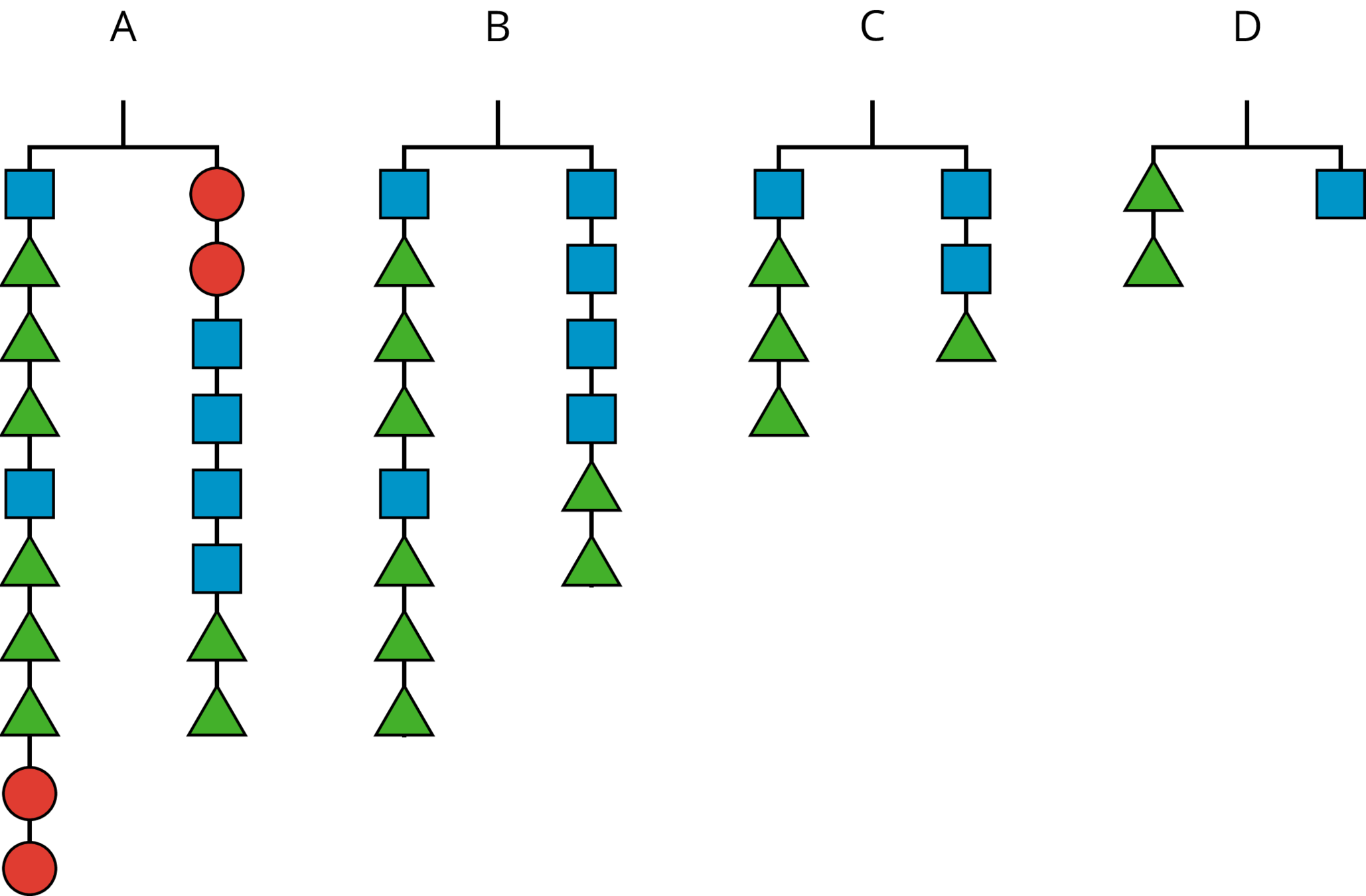Lesson 3; Balanced Moves
Warm Uo
Figures A, B, C, and D show the result of simplifying the hanger in Figure A by removing equal weights from each side. Here are some equations. Each equation represents one of the hanger diagrams.2(x+3y)=4x+2y2y=x2(x+3y)+2z=2z+4x+2yx+3y=2x+y
Here are some equations. Each equation represents one of the hanger diagrams.2(x+3y)=4x+2y2y=x2(x+3y)+2z=2z+4x+2yx+3y=2x+y
Gettin' your Hands Dirty
- We can add the same quantity to each side, and the equation is still true (the hanger is still in balance).
- We can subtract the same quantity from each side, and the equation is still true.
- We can double or triple or halve or third the things that appear on each side, and the equation is still true. More generally, we can multiply the number of things on each side by the same number.
- Add the same thing to each side. (The “thing” could be negative.)
- Multiply each side by the same thing. (The “thing” could be a fraction less than 1.)
Student Facing Assignments
Your teacher will give you some cards. Each of the cards 1 through 6 show two equations. Each of the cards A through E describe a move that turns one equation into another.
Activity Summary
- “What is a move you could do to the equation 7=2x on card 1 that would result in an equation of the form x=⎯? What is another move that would also work?” (Multiply each side by 12. Divide each side by 2.)
- “Which numbered card was the most challenging to match?” (Card 2, because it at first I only looked at the x-terms and thought the move involved a change of 8x.)
- “Does anyone have a value for x that would solve one of the numbered cards? How did you figure it out?” (x=2 is a solution for card 5. I added 3 to each side and then multiplied each side by 14.)